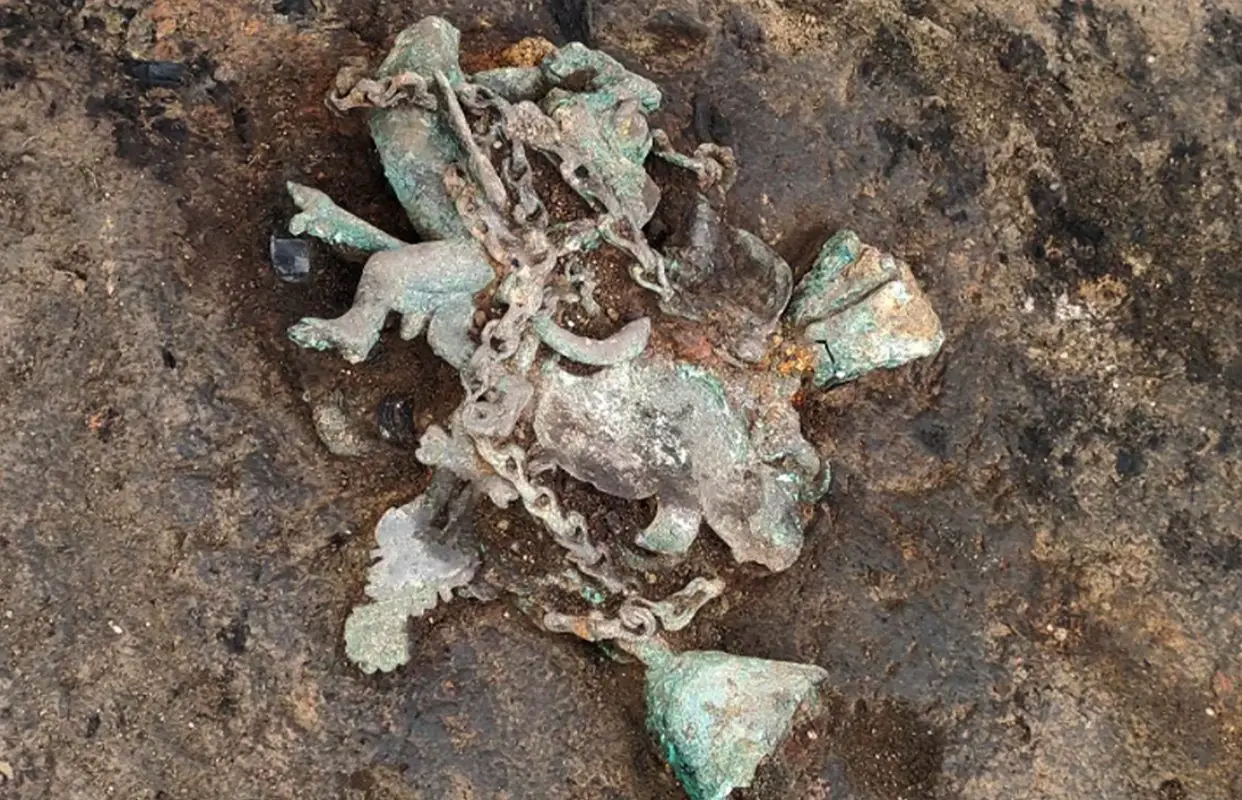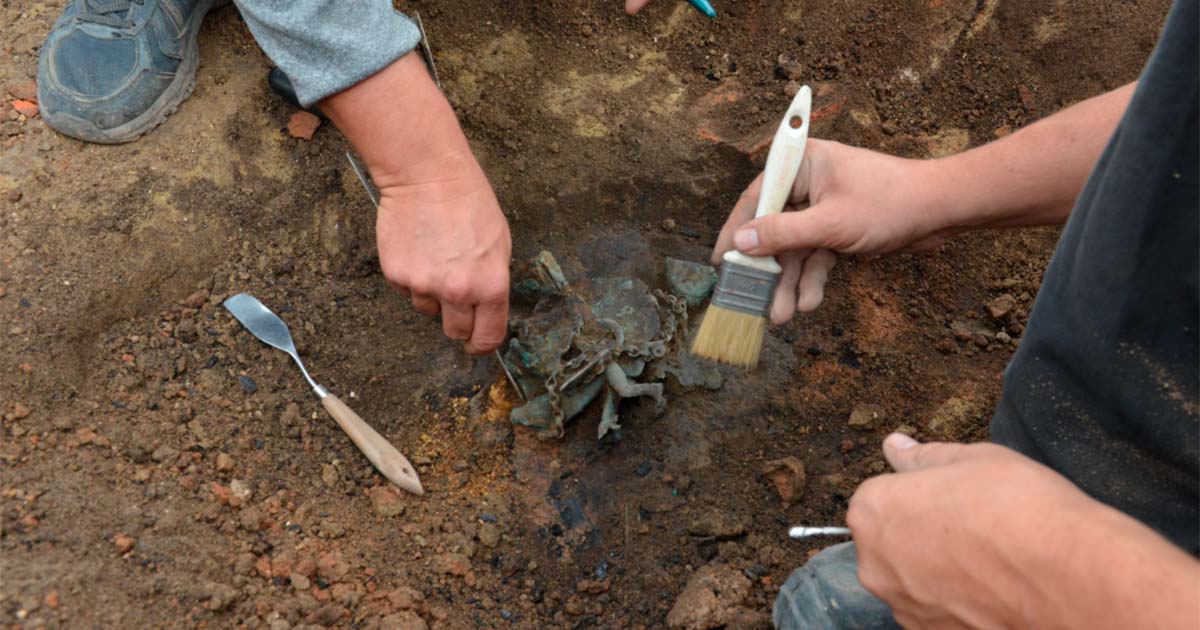Archaeologists excavating at Viminacium have uncovered a Roman phallus wind chime known as a tintinnabulum.
Viminacium was the provincial capital of the Roman province of Moesia Superio, located in the Kostolac region in Eastern Serbia. The city was first occupied during the 1st century AD, serving as a major communications and commercial hub, while also playing a crucial role in fortifying the Roman Empire’s northern frontier.

At its height, the city boasted a population of approximately 40,000 residents within a 1111 acre area, along with a legionary fortress, a hippodrome, an amphitheatre, a theatre, a forum, bathhouses, as well as a multitude of residences and domūs. Viminacium was destroyed in AD 441 by Attila the Hun, and then again in AD 582 by the Avars during the Migration Period.
Recent excavations have uncovered a tintinnabulum, a Roman wind chime that acted as a door amulet to keep away evil spirits. They were often hung at thresholds, such as entranceways to shops and dwellings, or under the peristyles around the inner courtyard or garden.

The tintinnabulum was found in the remains of a collapsed building destroyed by fire adjacent to one of the main city streets. The object is cast from bronze and depicts a magical phallus at the centre with two legs, wings, and a tail.
The Romans believed that the phallus was the embodiment of a masculine generative power and was one of the tokens of the safety of the state (sacra Romana) that gave protection and good fortune.

Phallic imagery can be found across the Roman world in sculptures, mosaics, frescoes, and portable objects, such as pendants or bulla, to ward off evil that may prey on children (in particular, young boys), or from the wandering evil eye (malus oculus) of men.
Speaking to sveoarheologiji, a representative from the Viminacium Archaeological Park, said: “It was for this reason that the owner of the building hung the tintinabulum in front of his gate. He believed that this object had powerful magical properties that could help him.”





